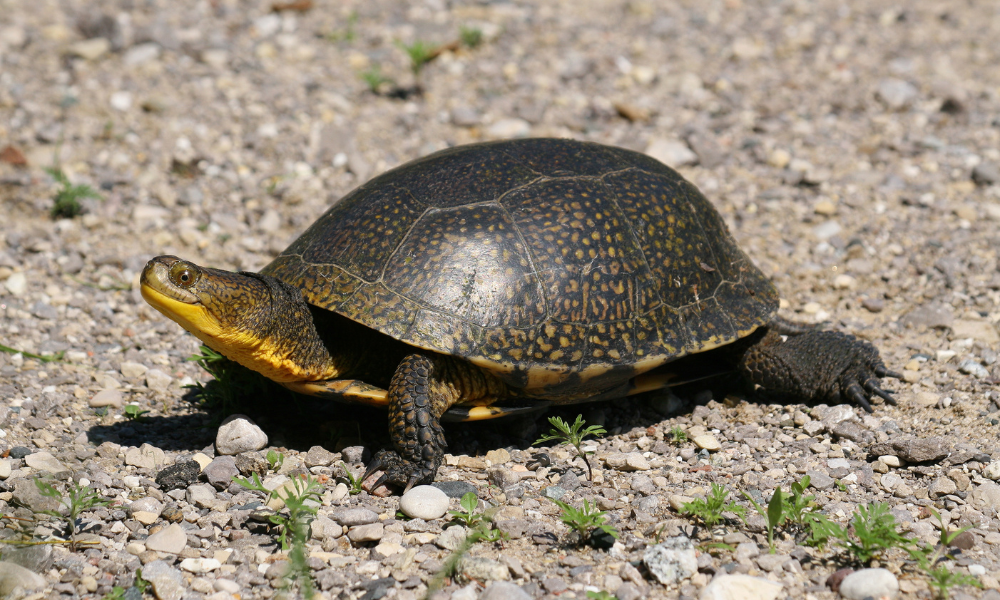
Home builder acquitted for damaging turtle habitat under Endangered Species Act

The Ontario Court of Appeal refused to allow the Crown to appeal a decision of the Ontario Court of Justice, which acquitted a home builder in the North Bay area of an offence under Ontario’s Endangered Species Act, 2007 (ESA).
Between June and August 2018, Consolidated Homes Ltd. (CHL) allegedly damaged the habitat of a threatened species, namely Blanding’s turtle, through the use of an excavator to “grub” land adjacent to Circle Lake in North Bay.
CHL faced a charge for an offence under s. 10(1)(a) of the ESA relating to the destruction or damage of the habitat of an endangered or threatened species. Under s. 2(2) of the ESA, the land impacted would be deemed a habitat if existing members of the species depended on that area to carry on their life processes at the time of the alleged offence.
The trial, running from between March and October 2022, focused on the issue of whether the evidence established that the land dug by CHL was the habitat of Blanding’s turtle. A biologist, serving as expert witness, relied on sightings of the turtles in the Circle Lake area in 2007 and 2017. A local resident also gave evidence of a nearby sighting in 2020.
A trial justice convicted CHL of the ESA offence, which was prosecuted under Ontario’s Provincial Offences Act, 1990. This prompted CHL to appeal. The Ontario Court of Justice allowed the appeal. The Crown requested leave to appeal this decision.
In R. v. Consolidated Homes Ltd., 2025 ONCA 41, the Court of Appeal for Ontario dismissed the application seeking leave to appeal.
First, in response to the Crown’s challenge of the appeal judge’s treatment of the evidence on sightings of Blanding’s turtles in the area, the appeal court noted that the judge appeared to have concluded that this evidence did not reasonably support the inference that turtles were also present in the area in the summer of 2018.
The appeal court accepted that the Crown had a strong argument that the appeal judge erred by reversing the trial justice’s factual findings on this basis. But the appeal court decided that the Crown failed to show that the public interest or the due administration of justice required intervention to correct the error.
The appeal court noted that the Crown was concerned that the appeal judge’s decision would establish a binding precedent that land could only be deemed a habitat of a species under ss. 2(1)(b) and 2(2) of the ESA if there was direct evidence that the species was using the land during the alleged offence.
However, the appeal court saw only a remote prospect that trial courts would treat the appeal judge’s decision as establishing a legal requirement that direct evidence would always be necessary in s. 10(1) ESA prosecutions.
The appeal court noted that the appeal judge’s decision was highly fact-specific and that it would be difficult for a reader lacking access to the full transcript to see exactly why the appeal judge found the evidence in this case insufficient.
Next, the Crown argued that the appeal judge erred by failing to consider the part of habitat’s statutory definition that included not only areas on which the species directly depended, but also areas on which it indirectly depended to carry on its life processes.
The appeal court found that the public interest or the due administration of justice did not require granting leave on this ground of appeal. Even if the appeal judge misread or misunderstood the provision, the appeal court found it unlikely that other judges would make a similar legal error.
Lastly, the Crown alleged error in the appeal judge’s finding that the trial justice improperly relied on the general habitat description for Blanding’s turtles since that document was neither a legal instrument nor a legal document.
The appeal court saw nothing incorrect in the appeal judge’s statements that the description was not a legal instrument or document. The description gave information about the types of areas that the turtles might use as habitat, but it did not conclusively prove that the species was using the subject land as a habitat at the time, the appeal court explained.